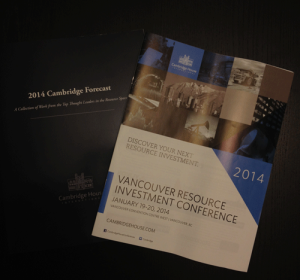For many DIY investors, the idea of investing in the markets using mutual funds is somewhat of a controversial topic. So, it was interesting to see one of Canada’s largest online brokerages, TD Direct Investing, provide a webinar for DIY investors on the topic of mutual fund investing.
On the one hand, there’s no disputing the popularity of mutual funds as the dominant investment vehicle for many Canadian investors, especially on the managed wealth side of the spectrum. Mutual funds offer diversity and a ‘hands off’ approach that appeal to many non-DIY investors.
On the other, there’s the notion of cost – specifically that DIY investors can avoid the costs of products like mutual funds by choosing their own financial products or building their own portfolios.
Like all things related to investing, there are some interesting ‘grey areas’. There are (relatively) low cost mutual fund choices that might be appealing to some DIY investors and as such, this might be a webinar of interest to learn more about these products.
This webinar, produced by TD Direct investing and presented by Client Education Instructor, Jian Lu, offered a brief overview and introduction to the world of Mutual Funds (MFs).
The one-hour session included a 30-minute video on the basics of MFs followed by a live Q&A. There was also a walk through of TD’s online platform, WebBroker, so participants could see how costs, types, and other aspects of MF investing could be easily compared. The session moved along quickly and kept the viewer engaged and interested throughout, although it was clearly directed at novice investors.
That said, this webinar, while geared towards DIY investors, did not discuss (or even mention) one of the most popular categories of mutual funds for cost conscious investors – the TD e-Series. Instead, this webinar chose to discuss D-series funds, which are arguably a pricier version of the popular e-series product.

Nevertheless, this webinar touched on a few issues that DIY investors might want to keep in mind if they plan to include MFs as part of their portfolios.
- Fees are always a concern for the DIY investor, and MFs are no exception. This webinar discussed three kinds of fees including sales charges, trailers (commissions), and management expense ratio fees (MERs). They can add up quickly, and the DIY investor should check them out the MF to know what they are and whether the costs make this type of equity worth buying.
- Mutual Funds are offered in different series. The D-series MFs are actively marketed to the DIY investor as they are, generally, cheaper to buy than other series (such as the A series). That said, TD Direct Investing also has e-Series funds (which were not discussed in the webinar) that may be less expensive than the D-series. In either case, there are still costs associated with MFs so there’s no free lunch.
- MFs are not bought like stocks, in real time. Since they are a collection of equities, the price (technically the Net Asset Value or NAV) for any unit of a MF is determined after the bell. So, the ‘price’ you buy or sell the unit at is determined after the close of the trading day.
- MFs are not meant for day trading, or for ‘market timing’. They are intended to be held, at least for a minimum period, and most funds will charge an early redemption fee (ERF) if they are sold too soon.
WebBroker, the TD Direct Investing platform that participants were walked through in the webinar, offers some good features that allow across the board price comparisons. One particularly interesting feature is that, when you do want to buy the MF, you can buy it by the number of stocks or by the amount of money you want to spend. You don’t have to work out either figure yourself, before making your sale or purchase.
Overall, the webinar was a helpful introduction to some of the MF choices available to DIY investors at TD Direct Investing. Given the complexity and diversity of MFs on the market, before getting started with any particular brokerage, it is probably a good idea to ask them about ALL the series you would have access to, not just the one’s they might prefer you to pay the most attention to. As a good reminder, when it comes to DIY investing, it pays to go the extra step in asking questions about what your options are.
 While many have heard the saying ‘money never sleeps’ apparently money is also willing to blow off a spectacular spring day in Vancouver. Such is the sacrifice that die-hard investors were prepared to make as they attended the spring edition of the 2014 Vancouver Small Cap Conference.
While many have heard the saying ‘money never sleeps’ apparently money is also willing to blow off a spectacular spring day in Vancouver. Such is the sacrifice that die-hard investors were prepared to make as they attended the spring edition of the 2014 Vancouver Small Cap Conference. Fabrice Taylor
Fabrice Taylor If there’s any good news to be found in the junior mining sector, it’s that those companies struggling to stay afloat are still around to struggle. While the weight of negative news and uncertain forecasts still weighed on investors, this year’s Vancouver Resource Investment Conference (VRIC) nonetheless contained an interesting cross section of attitudes about where things in the junior mining space ‘go from here.’
If there’s any good news to be found in the junior mining sector, it’s that those companies struggling to stay afloat are still around to struggle. While the weight of negative news and uncertain forecasts still weighed on investors, this year’s Vancouver Resource Investment Conference (VRIC) nonetheless contained an interesting cross section of attitudes about where things in the junior mining space ‘go from here.’ Some Highlights
Some Highlights Do(nut) be Fooled
Do(nut) be Fooled This year’s World Resource Investment Conference (WRIC) in Vancouver came a bit earlier in the calendar than last year’s conference against the backdrop of a mining and exploration market fraught with pain and nervousness. In the mining sector, hope seems to be the rare commodity everyone is looking for these days.
This year’s World Resource Investment Conference (WRIC) in Vancouver came a bit earlier in the calendar than last year’s conference against the backdrop of a mining and exploration market fraught with pain and nervousness. In the mining sector, hope seems to be the rare commodity everyone is looking for these days.
 This year’s
This year’s